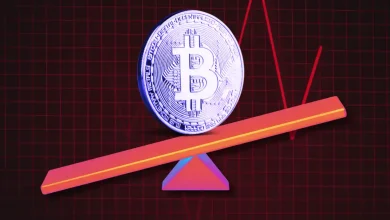
In a significant move within the cryptocurrency world, a Bitcoin whale recently transferred 2,000 BTC, valued at approximately $178 million, to Coinbase. This transfer marks a noteworthy event, as the Bitcoin in question has been held since 2010, according to data from Memepool. Back in 2010, Bitcoin was valued at a mere $0.06 per coin, with the entire market cap hovering around $250,000. At that time, daily trading volumes scarcely surpassed $60,000, highlighting the remarkable growth and transformation of Bitcoin over the years.
Satoshi Era Wallets Making Huge Profits
The activation of this dormant Bitcoin wallet is not an isolated incident. It follows a broader trend where long-inactive wallets, often referred to as “Satoshi Era” wallets, have been reactivated amid the recent surge in Bitcoin prices. This resurgence in activity comes on the heels of a market rally, partly influenced by political events such as Donald Trump’s U.S. election win earlier this month. As of now, Bitcoin is trading at $88,532, following a slight cooling from a record high of $93,214 achieved on Wednesday.
This year has witnessed several instances of early Bitcoin wallets, containing coins mined between 2009 and 2011, becoming active. While it remains uncertain whether the Bitcoins from these wallets have been sold, it is plausible that early adopters are capitalizing on the current high prices to secure substantial profits. As Bitcoin continues to break new records, these whales stand to gain significantly. However, the activation of these early wallets could introduce substantial selling pressure, potentially influencing Bitcoin’s price trajectory. Despite this, many investors maintain a bullish outlook, anticipating Bitcoin’s potential to reach the psychologically significant milestone of $100,000 by year-end.
Bitcoin ETF Outflows: A Cause for Concern?
In the realm of Bitcoin investment funds, the U.S.-listed Bitcoin ETFs have experienced notable outflows. On Thursday, these funds saw $400.7 million withdrawn, marking the third-largest outflow since their inception, as reported by Farside data. Bitcoin’s price has corrected nearly 6% from its all-time high recorded on November 13, when it surged past $93,000. However, this price adjustment is not alarming, as it is typical for investors to secure profits following new all-time highs.
In a contrasting trend, BlackRock’s IBIT has continued to attract inflows, with $126.5 million added since November 7. On the flip side, other ETFs such as Fidelity’s FBTC, Bitwise’s BITB, and Ark’s ARKB have experienced significant outflows, amounting to $179.2 million, $113.9 million, and $161.7 million, respectively. Additionally, Grayscale’s products recorded combined outflows of $74.9 million, highlighting a mixed sentiment among institutional investors.
A Correction to $78K or Rally Towards $100K?
Bitcoin’s price journey has been marked by volatility, reaching a new all-time high of $93,265 on Wednesday before experiencing a 3.3% decline on Thursday. It is currently trading at approximately $89,691. Amidst these fluctuations, Bitcoin briefly touched $87,000 during ETF inflows. Market analysts remain optimistic about Bitcoin’s potential to surpass the $100,000 threshold, yet caution prevails as some Bitcoin holders and miners may choose to realize profits, thereby increasing selling pressure. This could potentially trigger a pullback to $78,000, underscoring the dynamic nature of the cryptocurrency market.
As the year progresses, the cryptocurrency market remains a focal point for investors worldwide, with Bitcoin’s price movements and related market activities closely monitored. The interplay of whale activity, ETF flows, and market trends will undoubtedly shape Bitcoin’s trajectory in the coming months.






